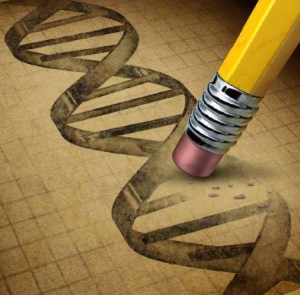by KRISTINA BRUCE | Cutting the Gordian Knot | July 30, 2015
Science is full of “Eureka!” moments. Why is something so obvious being ignored?
It has perplexed me for a number of years now that the scientific community has not come to the conclusion that homosexuality is predominately genetically based. It doesn’t require an advanced degree in reproductive genetics to connect the dots and come to a conclusion which would be relatively simple with today’s technology to confirm.
 I became aware of the possibility of proving a genetic basis for sexual orientation in 1991, after reading the work of Dr. Simon LaVey; a Cambridge and Harvard educated neuroscientist who had shown anatomical differences in the hypothalami of deceased homosexual men who had succumbed to A.I.D.S.. His findings demonstrated that the hypothalami of the gay men studied were consistently the same size of a female. The study had a small sample group, because of course there just aren’t that many gay men offering up their corpses for necropsies on a daily basis. The study was derided by many in the scientific community and not a tremendous amount of attention was given to it as the years went by. About a decade ago though I had my own eureka moment when I learned more about genetics and the existence of chimerism, mosaicism, vanishing twins and the existence of even microchimerism between mothers, their children and even transplant recipients. It didn’t take long after learning about these naturally occurring phenomena to put 2 and 2 together.
I became aware of the possibility of proving a genetic basis for sexual orientation in 1991, after reading the work of Dr. Simon LaVey; a Cambridge and Harvard educated neuroscientist who had shown anatomical differences in the hypothalami of deceased homosexual men who had succumbed to A.I.D.S.. His findings demonstrated that the hypothalami of the gay men studied were consistently the same size of a female. The study had a small sample group, because of course there just aren’t that many gay men offering up their corpses for necropsies on a daily basis. The study was derided by many in the scientific community and not a tremendous amount of attention was given to it as the years went by. About a decade ago though I had my own eureka moment when I learned more about genetics and the existence of chimerism, mosaicism, vanishing twins and the existence of even microchimerism between mothers, their children and even transplant recipients. It didn’t take long after learning about these naturally occurring phenomena to put 2 and 2 together.
The vast majority of homosexuality is likely the result of chimerism.
I will try to break it down in as few words as possible how chimerism is most likely the basis of non-traditional sex orientation or sexual identity.
Not everyone is running around with just one set of DNA. Nope, many of us unknowingly carry blue prints from not just one plan but two and sometimes even more individuals. How does this happen? Well it’s pretty interesting. Many times women produce more than one egg during ovulation. As a matter of fact, many pregnancies are multiple para in the beginning, it’s just that not very many second or third eggs are viable and don’t make it to implantation. So when these other embryos break apart on their little trip down the fallopian tube, cells from the demised gamete can come in contact with a viable one. When this occurs, often times the viable gamete absorbs and incorporates the DNA of the non-viable twin into its own structure. It’s why you see people occasionally express these traits as an odd colored eye or a shock of blonde hair in a scalp dominated by brunette. Most times it’s not noticeable at all because where this DNA has been incorporated isn’t seen. There are cases of women whose reproductive organs are not their own but that of an unborn twin. Imagine going to have genetic testing to see if your children are a match for a kidney transplant only to find that you’re not a genetic match with your child. Then being told that they are only a close relative because the ovaries which produced them belonged to your unborn sister. This was the case for one 52-year-old woman suffering from renal failure. Read the case study here. There have been multiple cases discovered in recent years of mothers who have given birth to the children of their own unborn twin as in the case of Lydia Fairchild.
How to recognize a chimera? Most times you can’t.
Animals born in large litters are more chimeric than humans. Cats are a good example of this. Male calico cats and male tortoise colored cats are chimeras. They’re expressing the female coat patterns but retain the sex organs of the dominant male DNA. In humans sometimes you’ll see subtle things like dark patches of skin which tan differently than other body parts, elaborate mosaic patterns of different colored skin and even the occasional supernumerary nipple. Some of them are striking to look at.
Read the full article at Cutting the Gordian Knot.
